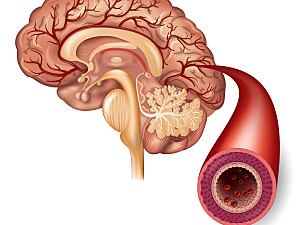Certain adeno-associated viruses (AAV) have some ability to cross the blood–brain barrier (BBB), at least in young animals. A notable success is using AAV9 in the gene therapy product for spinal muscular atrophy that’s FDA-approved for infants. However, most research advances have not translated well from rodents to primates.
Now, researchers at Brigham and Women’s Hospital have designed two promising AAV9 variants that are much more effective than the parent vector for delivering therapeutic transgenes into the central nervous system (CNS) of mice and macaques. Furthermore, as they report in Nature Biomedical Engineering, one of the variants proved useful for delivering antitumor therapy in a mouse model of glioblastoma.
The report’s authors are Yizheng Yao, PhD, a fellow in the Department of Neurosurgery, Jun Wang, Yi Liu, Yuan Qu, Fengfeng Bei, PhD, principal of the Bei Lab, and colleagues.
Capsid Engineering and Testing in Mice
The researchers speculated that incorporating certain cell-penetrating peptides (CPPs) into the AAV capsid could improve its tropism for the CNS. CPPs are a group of short peptides that readily cross biological membranes, and a CPP was previously shown to enhance brain uptake of AAV9 in mice.
In the initial round of screening, the team investigated 14 CPPs, genetically inserting each of them into a known receptor-binding domain of the AAV9 capsid. With iterative screening and sequence optimization, they created two AAV9 variants that exhibited much-improved brain penetration, compared with AAV9, across four mouse strains:
- AAV.CCP.16 — 59- to 249-fold greater transduction efficiency than AAV9, depending on the strain
- AAV.CCP.21: —13- to 249-fold greater transduction efficiency
Testing in Monkeys
The two variants were then compared with AAV9 in cynomolgus macaques. Transduction efficiency of AV.CPP.16 was 7.0-fold greater than AAV9 in three young animals and 2.0- to 8.6-fold greater in three adults, depending on the brain region studied. AAV.CPP.21 was only moderately more efficient than AAV9.
Gene Therapy for Glioblastoma
The researchers also report two examples of systemic gene therapy for glioblastoma in mice, using AAV.CPP.16 to deliver:
- Antibodies against PD-L1, an immune checkpoint molecule expressed at high levels by a large percentage of glioblastoma tumors. This treatment had only a mild pro-survival effect in the mice, but a phase 2 clinical trial combining PD-L1 antibody therapy with radiation therapy has shown moderate survival benefit in glioblastoma. The addition of radiation to AAV.CPP.16-delivered therapy is worth investigating in mice.
- Herpes simplex virus type 1 thymidine kinase (HSV-TK1), a suicide gene that, when expressed in tumor cells, turns ganciclovir into a tumor-killing agent. In this study, only approximately 10% of tumor cells were transduced, but meaningful survival benefit was achieved. The diffuse, rather than local, nature of AAV.CPP.16-mediated transduction in the tumor may be a crucial attribute.
Toward Clinical Translation
Increasing evidence suggests the blood–brain barrier is only partially disrupted in patients with glioblastoma, meaning limited drug delivery across it could be a major cause of failure for otherwise promising therapies. AAV.CPP.16 could have broad application for the treatment of glioblastoma and multiple other CNS pathologies.
